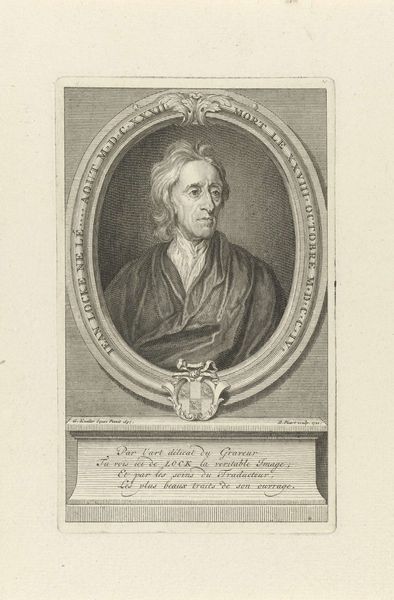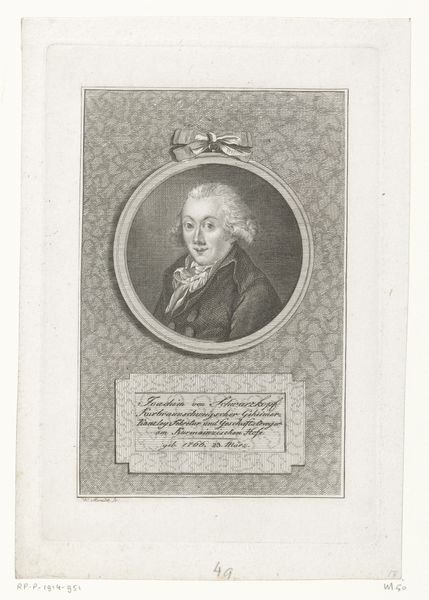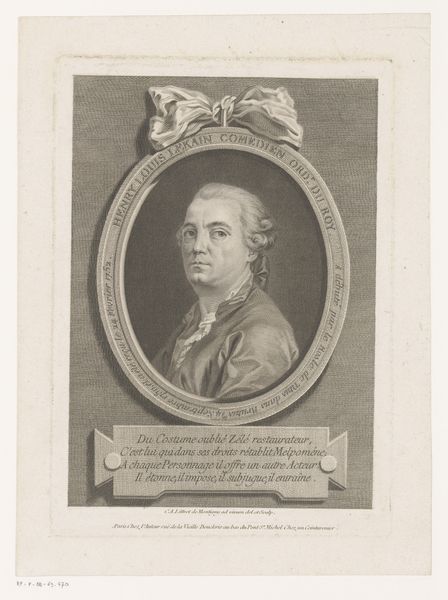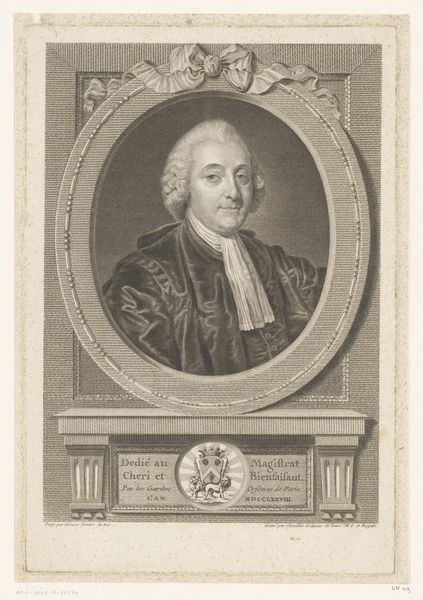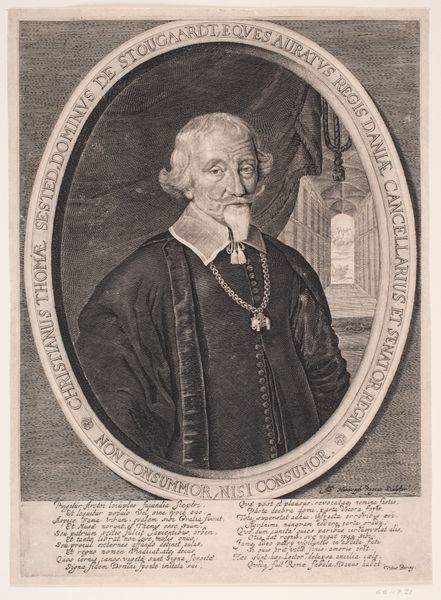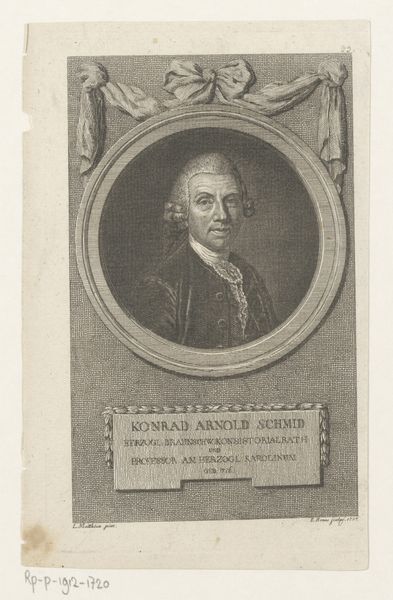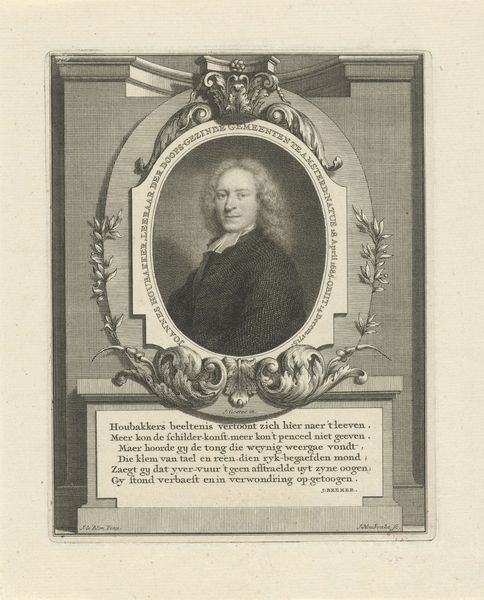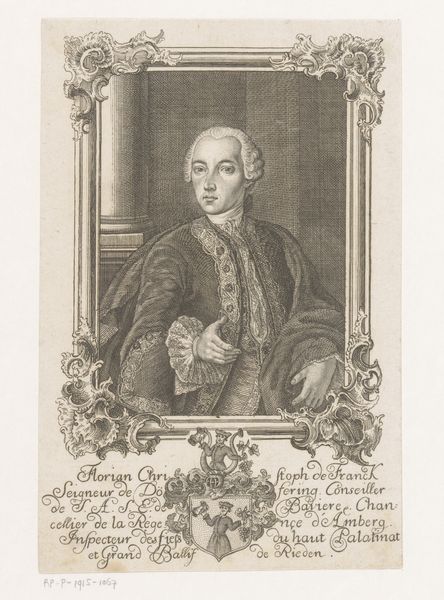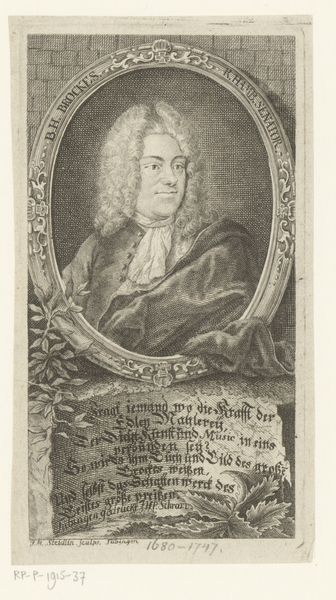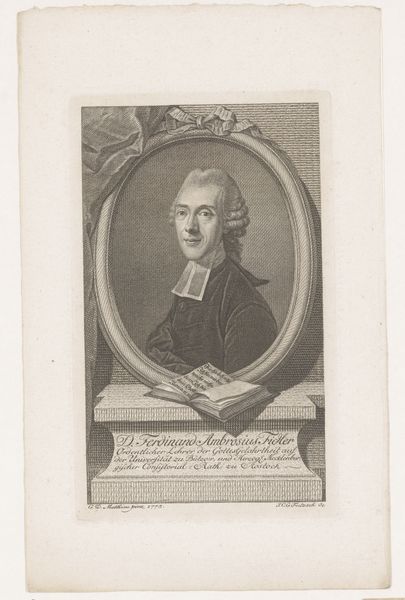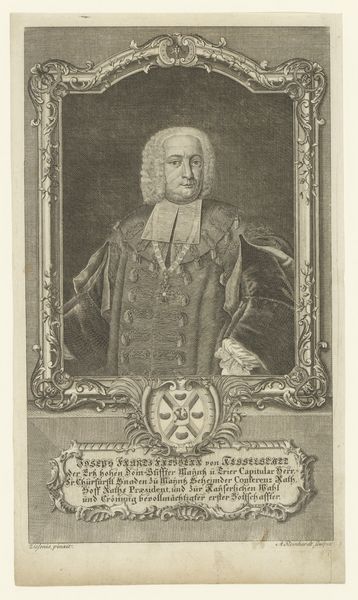
print, engraving
#
portrait
#
baroque
# print
#
old engraving style
#
pencil drawing
#
engraving
Dimensions: height 265 mm, width 162 mm
Copyright: Rijks Museum: Open Domain
Curator: This engraving presents a portrait of Petrus Joseph van Francken-Sierstorpff. The piece dates from 1710 to 1725 and is attributed to Jan Baptist Jongelinx. What are your initial thoughts on it? Editor: It feels very formal and contained. The oval frame, the classical base—everything reinforces a sense of established power. There’s a slight severity to the sitter's gaze. Curator: The use of the oval frame is quite deliberate, isn't it? Emphasizing the face as the focal point, distilling the individual into a presentable icon, and how would you unpack his clothing and ornamentation? Editor: His attire marks him as a member of the clergy, right? That collar and the elaborate cross are clear visual signals of his religious authority. Curator: Precisely, we need to decode what those visual cues signified back in the early 18th century. Each detail contributes to a complex network of symbolic associations. His very presence evokes cultural memory, tradition, and an almost divine order. Editor: I find it interesting how the artist positions him above the coat of arms and text—further solidifying his hierarchical standing in society. Was it intentional to emphasize the religious status as distinct and inherently superior? Curator: Absolutely. Notice the careful attention to detail in the coat of arms. It's not just decoration; it's a key to his lineage, status, and the authority he wielded. Symbols often possess polysemy, containing multiple layers of interpretation and meanings. Editor: Which raises the question, how much does this tell us about the individual versus the office he represents? Is it truly a portrait, or an exercise in reinforcing an institution? How much is propaganda, actually, showing an exercise of power through representing high ranked religious figures in the society of that time. Curator: The intersection of the personal and the symbolic is where things get truly compelling, isn't it? While ostensibly a portrait, the image also operates as a powerful statement of religious and social power. It’s a reflection of the broader structures. Editor: Yes, even in what seem like formal conventions we still uncover ways individuals reinforced systems. Thank you. Curator: Indeed, thank you.
Comments
No comments
Be the first to comment and join the conversation on the ultimate creative platform.
